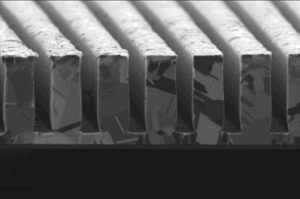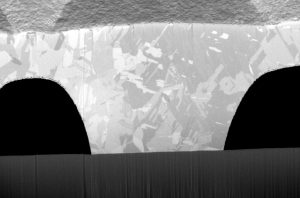Spherolyte® Cu UF3
Universal Copper plating suite for RDL and micro via filling
Diverse applications
Suitable for a wide variety of next generation packaging applications for RDL and µ-via filling
Pure and
reliable
Highest Cu purity and improved voiding performance for highest reliability
Outstanding performance
Fine line plating capability and low resistivity
Universal Copper plating electrolyte
Spherolyte® UF3 is our chemical suite of choice for the formation of Cu redistribution layers and via filling. Its outstanding deposit properties i.e. very pure and low stress deposits paired with its high speed and good uniformity performance make it the product of choice for highly reliable, low resistivity Cu structures for next generation packaging needs.



- RDL formation for all applications: flip chips, FOWLP, power chips, sensors
- Fast and reliable micro via filling
- Suitable for state-of-the-art plating equipment (e.g., fountain plater, batch type tools)
- Fully analyzable
What inspires us
Why we developed Spherolyte® Cu UF3
Your challenge
Next generation packaging requires highest purity and high ductility of Cu RDL/ µ-vias to reduce influences of thermal stress and hence increase the device reliability. Additional requirements include outstanding voiding performance of the plating chemicals as well as low resistivity of the resulting Cu structures. Furthermore, excellent filling capabilities are needed to ensure optimal via stacking and interlayer contact and to avoid organic material impurities, thus leading to an improved developability of the PI film.
Our solution
Spherolyte® UF3 is Atotech’s process of choice for RDL and µ-via filling. Our high purity chemistries significantly reduce the level of additive incorporation and minimize the risk of microvoid formations that amass after thermal cycle testing and may lead to failures or breakages in the Cu lines. Spherolyte® Cu UF 3 enables stable and optimal mechanical properties within a wide process window. The three additive system is designed for plating sub 5 µm lines and large Cu pads, while simultaneously enabling via filling. The combination of both features exactly addresses the future requirements of FOWLP technology



